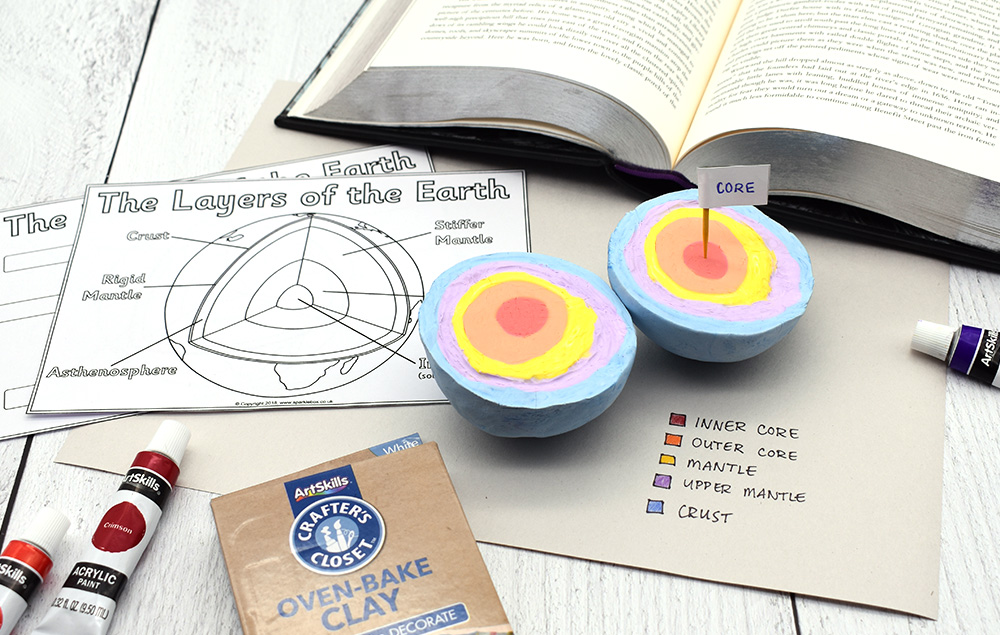From Earth to Elegance: When Clay Became Decorative

Imagine a world where the very ground beneath our feet becomes a canvas for creativity. This is not the stuff of science fiction but a reality that has unfolded over millennia, where clay, the humble earth, has transcended its utilitarian roots to become an exquisite element in the world of interior design and decoration. The transformation of clay into decorative art is a narrative of human ingenuity, from its humble beginnings as a material for pottery to its evolution into sophisticated ceramic art. Let's explore this journey from earth to elegance.
What is Clay?

Clay is a fine-grained natural soil material that possesses a unique plasticity when wet, allowing it to be molded into various shapes. Here are some key characteristics of clay:
- Composition: Primarily composed of minerals like kaolinite, montmorillonite, or smectite, clay can also include other substances like silica, iron oxides, and organic matter.
- Properties: When clay dries, it hardens, and when fired at high temperatures, it becomes ceramic, an irreversible process due to the chemical changes in the clay’s structure.
- Variety: There are numerous types of clay, from red or yellow earthenware to white porcelain clay, each offering unique qualities when used in artistic expressions.
The Historical Evolution of Clay in Art

The use of clay dates back to prehistoric times, with the earliest known pottery artifacts found in East Asia, dating back to around 14,000 BC. Here is how clay’s role in art has evolved:
- Pottery: Initially used for functional items like pots, bowls, and containers, the art of pottery gradually developed into an avenue for artistic expression.
- Decorative Ceramics: Ancient civilizations like the Egyptians and Greeks used ceramics not only for everyday items but also for decorative objects, leading to a rich tradition of ceramic art.
- Industrial and Art Movements: From the Renaissance with its majolica pottery to the Industrial Revolution, which brought about mass production, and into the Modern Art movement with the likes of Picasso and Gaudi using ceramics in innovative ways, clay has continuously evolved.
🏺 Note: For more on the historical evolution of clay in art, consider exploring resources like "The Potter's Book of Glaze Recipes" by Emmanuel Cooper.
From Pottery to Sculpture: The Artistic Expansion of Clay

While pottery is often associated with functionality, artists have long recognized clay’s potential for sculptural art. Here are some ways clay has expanded into the realm of fine art:
- Figurative Sculptures: Many artists, including those from ancient Mesopotamia to contemporary figures like Grayson Perry, have crafted intricate figures from clay.
- Abstract Forms: Clay’s malleability allows for creating abstract shapes that challenge traditional forms of representation.
- Installation Art: Ceramic artists now use clay to create large-scale installations that interact with space and the viewer, creating immersive experiences.
Contemporary Clay in Interior Design

Today, clay has found a place in the world of interior design, where its natural beauty and versatility are celebrated. Here are some trends and uses:
- Vases and Containers: Artisan-made clay vases with unique glazes have become focal points in home decor, bringing a touch of the earth indoors.
- Wall Art and Sculptures: Ceramic wall art adds texture, color, and depth to spaces, acting as focal points in modern interiors.
- Tableware and Serveware: With a resurgence in handmade, high-quality ceramics, dining tables across the globe are adorned with unique, often individually crafted items.
| Application | Description |
|---|---|
| Tile Art | Hand-painted ceramic tiles are used for intricate murals or as individual pieces that add color and patterns to bathrooms, kitchens, or entryways. |
| Planters | Clay planters with artistic designs bring life to indoor plants, blending nature with craftsmanship. |
| Lampshades | Ceramic lampshades with pierced designs create a warm, ambient glow, transforming light into an art form. |

In recent years, the minimalist movement has embraced the simplicity and elegance of unglazed clay, showcasing its natural colors and textures in contemporary designs.
🔍 Note: For enthusiasts looking to explore clay in their own projects, ceramics workshops offer hands-on experience that can translate into unique home decor pieces.
This journey from earth to elegance continues to unfold as technology and artistic innovation push the boundaries of what can be achieved with this ancient material. Clay's intrinsic beauty, malleability, and the profound connection it provides to the earth make it an enduring choice for both functional and decorative art.
Throughout history, the narrative of clay has been one of transformation, from simple pots to sophisticated sculptures and beyond. Its presence in our homes and lives tells a story of evolution, where the earth's raw materials are lovingly shaped into expressions of art and design. By embracing clay in modern decor, we not only honor this rich history but also appreciate the delicate balance between craftsmanship, functionality, and beauty.
Why is clay still popular in interior design?

+
Clay’s enduring appeal in interior design lies in its versatility, organic feel, and the artisanal quality it brings to spaces. The uniqueness of each piece, its connection to nature, and the ability to blend ancient techniques with modern aesthetics make clay a timeless choice for enhancing environments.
Can anyone start working with clay?

+
Yes, clay is accessible to everyone, from beginners to professional artists. Workshops, community centers, and art schools offer introductory classes that teach the basics of working with clay, making it an approachable medium for all skill levels.
What makes ceramic different from other materials used in art and design?

+
Ceramic’s transformation through the firing process is unique, turning a malleable material into a durable, yet fragile, substance that can be both practical and artistic. Its ability to hold color and glaze, combined with its textural properties, sets it apart, offering both functionality and a distinctive aesthetic appeal.



